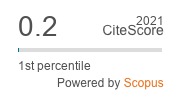The Efficacy of Rolling Barriers in India's Expanding Transport Sector- A Case Study Pune-Mumbai Highway
Abstract
This research paper highlights the importance of cost-effective investments in road safety within India's growing transport sector. The Indian government acknowledges the significance of infrastructure and transportation investments in effectively connecting cities and towns. One particular area of focus discussed in this paper is the implementation of "rolling barrier" technologies. These technologies aim to redirect errant vehicles onto the correct course and prevent vehicle overturning. Various factors contribute to road accidents, including the size of road systems, the number of vehicles, and the adherence to traffic laws by the population. The objective of this study is to assess the effectiveness of rolling barriers in enhancing road safety and to understand their crash-cushioning characteristics. Additionally, it seeks to determine the appropriate running direction for vehicles and the required barrier strength. It is important to note that the Rolling Barrier mentioned in this paper adheres to the "Guidelines for Installation and Management of Road Safety Facilities" established by the Ministry of Construction and Transportation, indicating its compliance with government standards for ensuring road safety. The rolling barrier technology can be safely utilized to protect curved road segments, medians, entry or exit ramps of parking garages, and other designated areas. In summary, this paper underscores the significance of investing in cost-effective road safety measures, such as rolling barriers, to enhance safety in India's rapidly expanding transport sector.




